Whether you’re searing a cast iron ribeye or stirring a pot of stone-ground grits, the kind of salt you use makes a difference—not just in flavor, but in how you feel after the meal. In this guide, we’ll break down everything about pink Himalayan table salt—what it is, why it’s not just another fancy crystal, and how it can change the way you cook and nourish your body.
You’ll get a deeper look into the origin, health claims, and how it compares to regular salt. Plus, I’ll share my first impression of pink Himalayan table salt from a Southern cook’s perspective—when I swapped it in for the old white shaker. We’ll also tackle key questions, like whether it’s the healthiest salt you can use. Let’s dig in.
The Story & Intro: My First Taste of Pink Himalayan Table Salt
Growing up in the hills of Virginia, salt was simple: the white box with the girl and the umbrella. That’s what we reached for when seasoning everything from collard greens to Sunday fried chicken. But the first time I tried pink Himalayan table salt, it stopped me mid-stir.
I was working a weekend pop-up dinner here in Asheville—an open-air fire pit and a pork shoulder so tender it almost fell apart in the smoke. A chef buddy tossed me a pinch of what looked like rose-colored gravel and said, “Try this instead of kosher.” That pork? It didn’t just taste salted—it tasted alive. Brighter, cleaner, almost mineral. That was the first time I understood that not all salt is created equal. Since then, pink Himalayan table salt has earned a permanent spot beside my stovetop.
Now, I use it in everything from seasoning rubs to finishing veggies pulled straight from the garden. It doesn’t clump in the shaker, and it’s surprisingly versatile—whether you’re making hearty, rustic meals or something light and fresh. There’s something soulful about using a salt mined from ancient earth, and for folks like me who love blending Southern roots with global influence, pink Himalayan table salt is more than a pretty seasoning—it’s a kitchen essential.
You’ll find it in recipes across the site, like my smoky grilled okra or even that lemony butter bean soup. I use it every day because it seasons more than just the food—it seasons the story behind it.
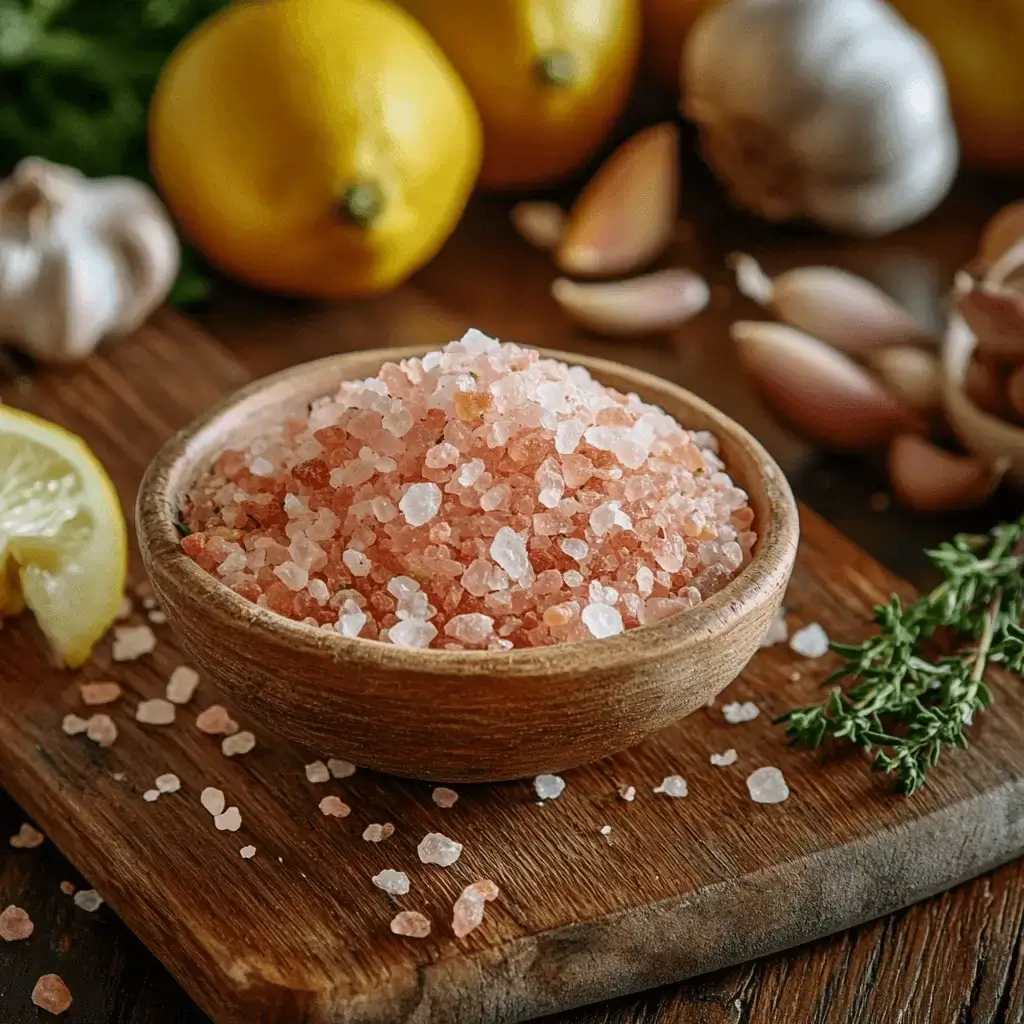
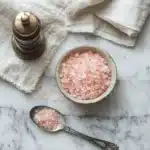
Lemon Himalayan Salt Brine: A Top Detox Method for Weight Loss
- Total Time: 2 mins
- Yield: 1 glass
Description
A calming, mineral-packed morning drink made with Himalayan pink salt to aid digestion, boost hydration, and support gentle detoxification.
Ingredients
1 cup of warm, filtered water
¼ to ½ teaspoon of Himalayan pink salt
Juice of half a lemon (optional)
1 teaspoon of apple cider vinegar (optional)
Instructions
Fill a glass with warm, filtered water.
Stir in Himalayan pink salt until it completely dissolves.
If desired, mix in lemon juice and apple cider vinegar.
Sip slowly on an empty stomach each morning.
Notes
Use warm (not hot) water to help preserve the mineral content.
If you’re just starting out, begin with ¼ teaspoon of salt.
Limit intake to one serving per day.
Avoid this drink if you have high blood pressure or kidney concerns.
- Prep Time: 2 mins
- Category: Drink
- Method: Stirred
- Cuisine: Wellness
Nutrition
- Serving Size: 1 Cup
- Calories: 5
- Sugar: 0g
- Sodium: 350mg
- Fat: 0g
- Saturated Fat: 0g
- Unsaturated Fat: 0g
- Trans Fat: 0g
- Carbohydrates: 0g
- Fiber: 0g
- Protein: 0g
- Cholesterol: 0mg
What Exactly Is Pink Himalayan Table Salt?
Pink Himalayan table salt is hand-mined from ancient sea salt deposits in Pakistan’s Khewra Salt Mine. Its soft pink hue comes from trace minerals like iron, calcium, and potassium—elements that are often lost in heavily refined white salt.
Unlike standard table salt, which is often bleached and mixed with anti-caking agents, pink Himalayan table salt stays in its raw form. It’s minimally processed and typically comes in a variety of grain sizes, making it useful as both a cooking and finishing salt.
Not only does it add subtle crunch and color to your dishes, but many folks choose it for what’s not in it—no added chemicals or artificial iodine. For some, that’s a nutritional win. And let’s not forget: presentation matters. A sprinkle of pink crystals on a sliced tomato? It’s Southern charm meets natural elegance.
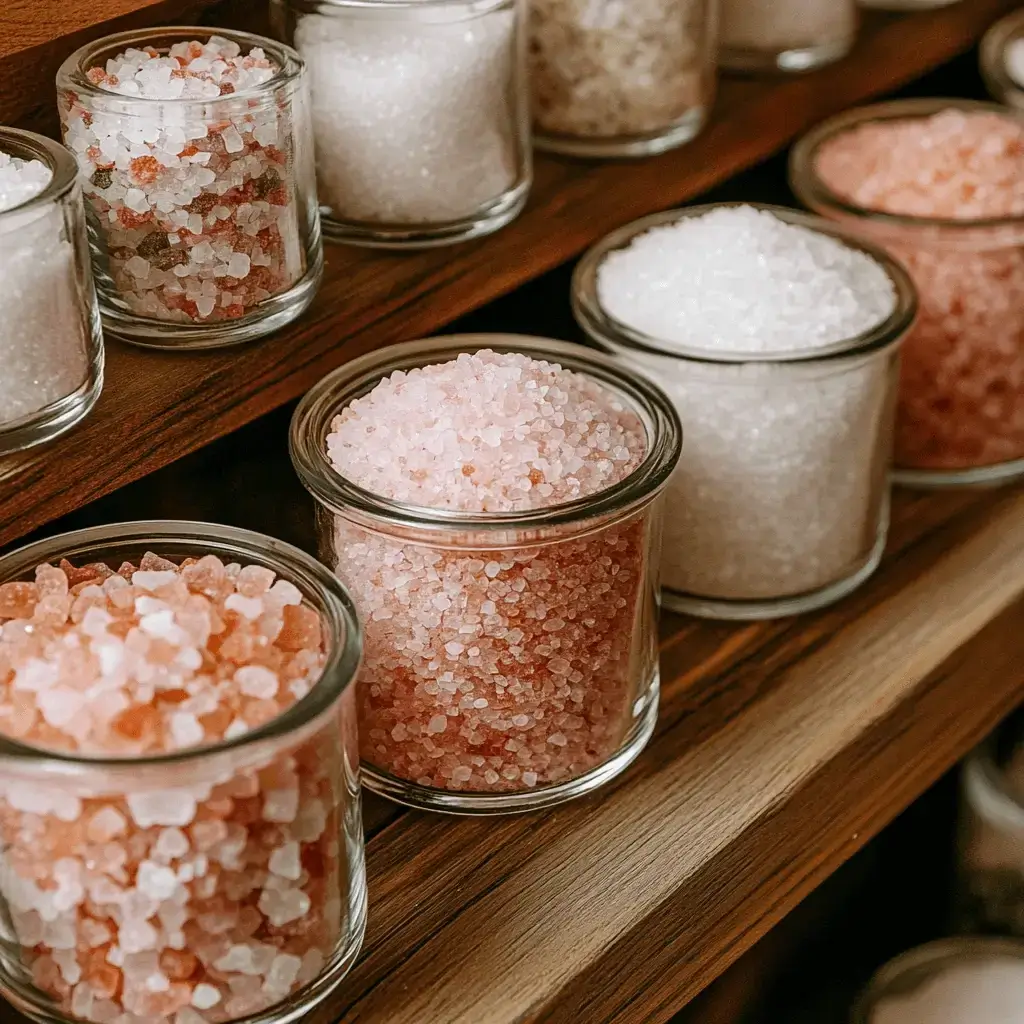
Why Southern Cooks (and Wellness Fans) Are Making the Switch
There’s been a quiet shift in kitchens like mine—away from the classic iodized shaker and toward salts that do more than just salt. Pink Himalayan table salt is a favorite for cooks who want purity, flavor, and a little extra mineral punch.
It’s not just the taste that matters—it’s what you’re putting into your body.
Pink Himalayan salt contains over 80 trace elements, and while the amounts are small, they can complement a nutrient-focused lifestyle. It’s especially handy in low-sodium cooking, where flavor has to shine without overdoing the salt content.
Need a practical reason? It’s a clean salt that works well in grinders and doesn’t absorb moisture the way regular salt does, especially in humid kitchens. Plus, it’s an easy upgrade to dishes like cast iron skillet potatoes or honey-glazed carrots without much effort.
So whether you’re dusting it on heirloom tomatoes or tossing it into a batch of skillet cornbread, pink Himalayan table salt is more than hype—it’s a pantry staple with heart.
How Pink Himalayan Salt Compares to Regular Table Salt
There’s a reason pink Himalayan table salt is sitting front and center on more spice racks these days. While it might look like just another trendy ingredient, it’s far from gimmick. To understand why, let’s look at how it stacks up against classic table salt—what’s different, and what that means for your cooking and your body.
Is Pink Himalayan Salt Just Fancy Table Salt? Not Quite.
At first glance, you might wonder if pink Himalayan salt is just table salt dressed up for a dinner party. The short answer? No.
Regular table salt is highly refined, stripped of nearly all minerals except sodium chloride. It’s processed for consistency and flow, often bleached and mixed with anti-caking agents. Plus, it’s usually fortified with iodine—a response to deficiencies seen in the early 20th century. That makes it more shelf-stable but less natural.
On the flip side, pink Himalayan table salt is harvested by hand, left unrefined, and packed with trace minerals. Its rosy tint? That comes from iron oxide—yes, the same mineral that gives clay its red tone. And because it’s less processed, it retains magnesium, calcium, and potassium.
In terms of sodium content, they’re close. Pink salt delivers a more intense and multi-dimensional taste. It’s a salt that adds more than just saltiness—it brings mineral depth that enhances natural ingredients. Try it on a ripe summer peach or even a crispy black-eyed pea fritter, and you’ll notice the difference.
How to Use Each Salt: Cooking, Baking, and Beyond
In the kitchen, choosing between pink Himalayan salt and table salt isn’t just about health—it’s about function. Table salt dissolves quickly and evenly, which makes it ideal for baking. You’ll find it in older Southern cake and biscuit recipes that count on uniform moisture and fine grains.
Pink Himalayan table salt, on the other hand, shines in seasoning, finishing, and brining. Its crystals add a pleasant crunch when sprinkled on roasted vegetables or grilled meats. If you’ve ever tried my rosemary skillet chicken thighs, you know what a well-placed pinch can do.
Another bonus? It doesn’t clump as easily in the shaker, especially in humid climates like ours here in the South. That alone makes it a solid upgrade in everyday cooking.
Whether you’re seasoning a broth or rimming a cocktail glass, pink Himalayan salt brings more than a sodium hit—it brings character. It’s a natural fit for rustic dishes that let ingredients shine on their own.
Pink Himalayan Table Salt and Your Health: What You Need to Know
Salt isn’t just a flavor booster—it’s a building block of health. But not all salts affect your body the same way. Pink Himalayan table salt often gets praised in wellness circles for its “clean” profile and mineral content. But what does it actually do to your body, and is it a good daily salt choice?
What Happens in the Body When You Use Pink Himalayan Salt?
First off, pink Himalayan table salt is still sodium chloride—just like regular salt. That means it impacts your hydration, muscle contractions, and nerve signals in the same fundamental way. Where it differs is in the extra stuff—the 80+ trace minerals that give it color and complexity.
These minerals include magnesium, potassium, calcium, and iron—each playing small but important roles in the body. While the amounts are modest, using a minimally processed salt like this means you’re not loading up on synthetic additives or anti-caking agents.
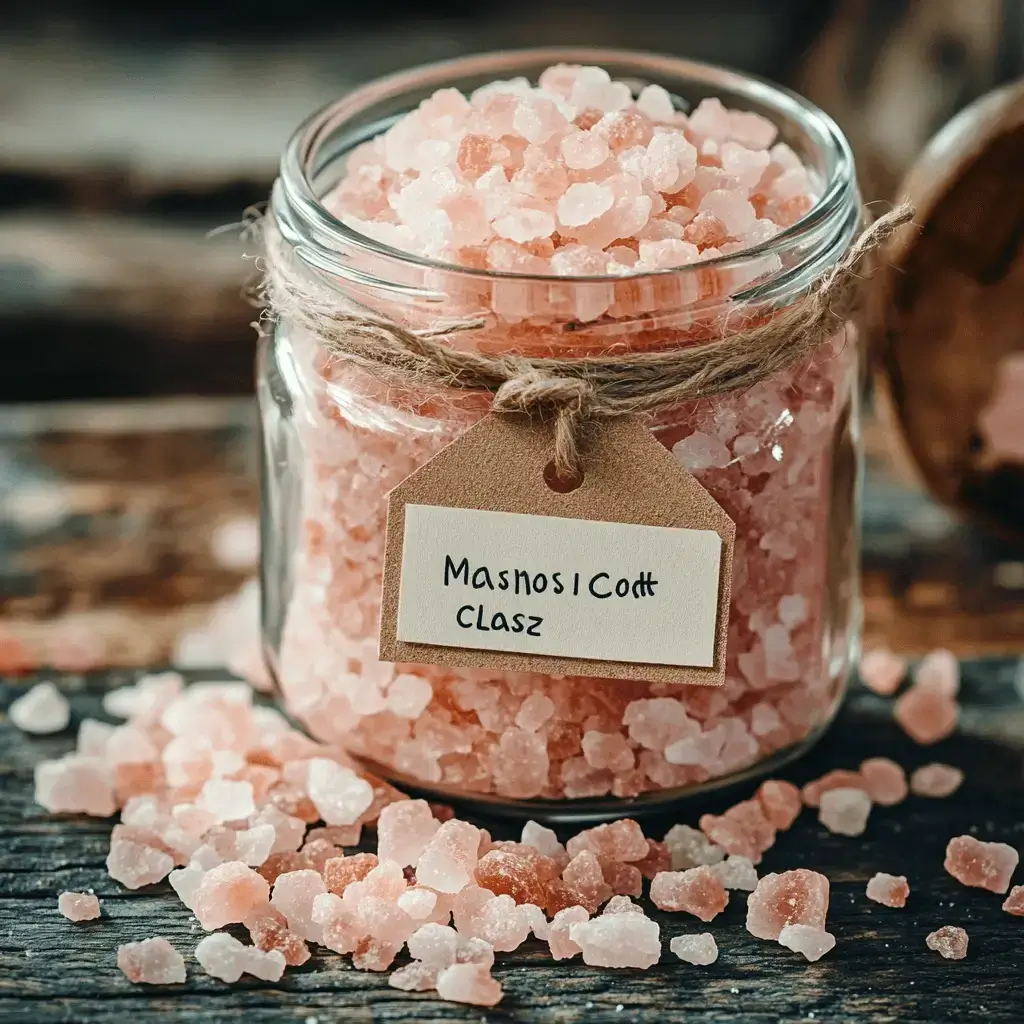
Here’s where pink salt shines: for people who are active, sweat a lot, or eat whole, unprocessed foods, a dash of mineral-rich salt can help rebalance electrolytes naturally. I often recommend a pinch of it in warm lemon water during my backyard cooking classes—especially when we’re grilling on a hot North Carolina afternoon.
It’s not a miracle cure, but it can support hydration and mineral balance in a gentler, more natural way. That’s especially helpful for folks reducing processed food intake and wanting to season cleanly.
Is It Good for You? Here’s the Truth
Let’s face it, salt works best in small doses. But when it comes to choosing the best salt for your daily cooking, pink Himalayan table salt has some clear advantages.
Because it’s unrefined, you’re avoiding unnecessary additives. That makes it a solid choice for anyone trying to follow a more whole-food, clean-eating lifestyle. It also lacks added iodine—something important for some people, but not essential if they’re already getting enough iodine from foods like eggs, dairy, and seafood.
As with all things, balance is key. Pink Himalayan salt won’t replace a multivitamin, but it’s a healthier alternative to heavily processed white salt. And flavor-wise, a little goes a long way, so you may find yourself using less of it overall. A boost for your health and your cooking.
I use it every day—whether it’s on pan-seared trout with lemon butter or mixed into homemade spice rubs. It elevates each dish with more than flavor—it brings in a rustic, natural touch I value as a home cook.
Is Pink Himalayan Table Salt the Healthiest Choice? A Salt Showdown
Salt serves not only to season food but also to support nutrition. So when people wonder, ‘Which type of salt is the healthiest to use?’ it’s a smart question. With countless varieties available—like sea salt, kosher, Celtic gray, and even black lava—it’s no surprise that choosing the right one can feel overwhelming. Let’s break it down and see where pink Himalayan table salt really stands.
How It Compares to Other Natural Salts
Let’s start with the top contenders:
- Table Salt: Highly refined, bleached, and often iodized. While it’s stable and cheap, it lacks minerals and may contain additives.
- Kosher Salt: Larger flakes, no additives, but usually just sodium chloride. Great for seasoning meats or canning.
- Sea Salt: Harvested from evaporated seawater. Contains trace minerals—but today’s oceans may contain microplastics and pollutants.
- Celtic Sea Salt: Moist and mineral-rich, often gray in color. Slightly lower sodium, but less convenient for everyday use.
Now, pink Himalayan table salt stands out because it checks several boxes:
- Rich in natural minerals (over 80 trace elements)
- Mined from ancient seabeds, free of modern-day ocean pollutants
- Beautiful color and flavor depth
- Versatile for cooking, finishing, brining, and even beauty uses
It doesn’t clump, doesn’t require additives, and adds a clean, gentle saltiness to food. Whether you’re tossing it on a farm-style tomato galette or mixing it into a mineral bath soak, it works with both body and flavor in mind.
So, Which Salt Should You Choose?
The healthiest salt isn’t just about what’s in it—it’s about how you use it. Pink Himalayan table salt offers a clean, mineral-rich profile without synthetic fillers. For those focused on whole-food cooking and mindful seasoning, it’s a smart, nourishing choice.
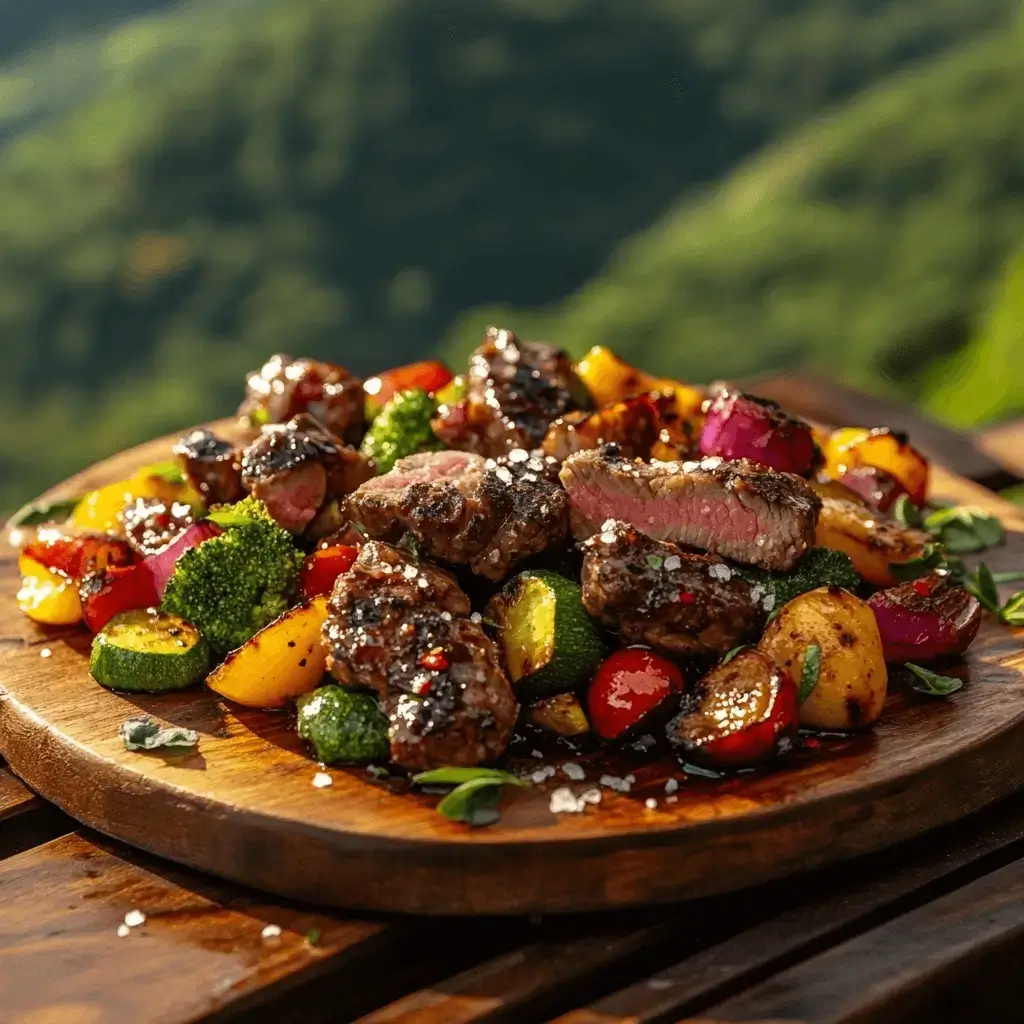
However, if you’re at risk for iodine deficiency which is uncommon in the U.S. today), you’ll want to get iodine from other sources like seaweed, eggs, or dairy, since pink salt doesn’t have it added.
Bottom line? If you’re cooking with intention and care—whether making cast iron peach crisp or seasoning a pot of greens—pink Himalayan salt gives you flavor and peace of mind.
FAQs About Pink Himalayan Table Salt
It provides sodium for hydration and nerve function, and trace minerals like magnesium and potassium may help maintain electrolyte balance—especially in active or low-processed diets.
No. Pink Himalayan salt is minimally processed and contains natural minerals, while table salt is refined, bleached, and typically has added iodine and anti-caking agents.
Yes, in moderation. It’s free of additives, rich in minerals, and works well for people who prefer clean, natural seasoning.
That depends on your needs. But pink Himalayan table salt is a strong contender for its purity, trace minerals, and versatility.
Conclusion:
As a Southern home cook who values both flavor and wellness, I’ve found pink Himalayan table salt to be more than just a seasoning—it’s a choice. It brings brightness to food and simplicity to your pantry. And when something tastes that good and supports your body, that’s a win worth savoring.
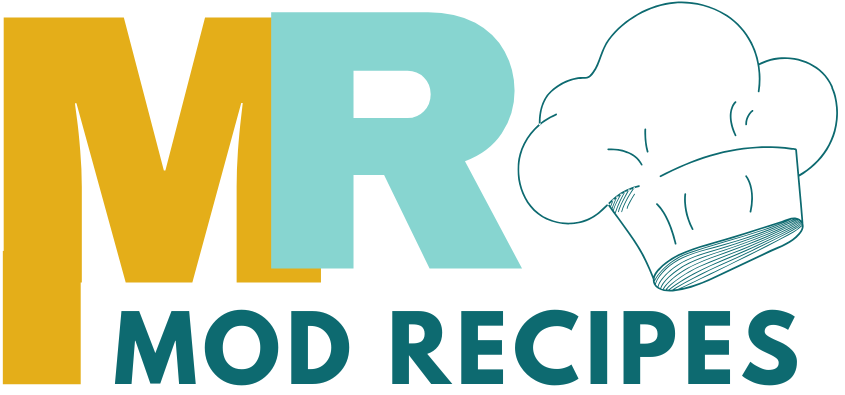

1 thought on “Pink Himalayan Table Salt: Why It Deserves a Spot on Your Kitchen Shelf”
Comments are closed.